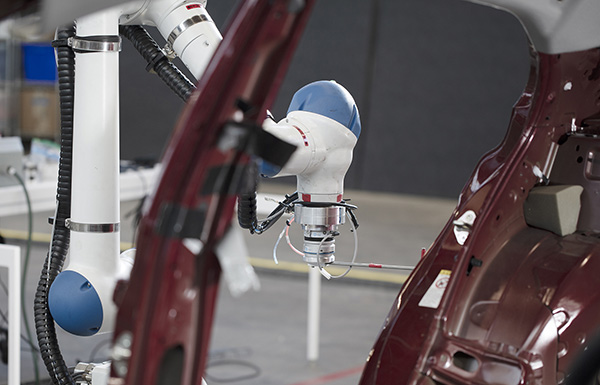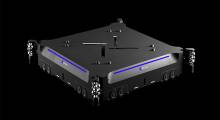Software rather than hardware is increasingly becoming the differentiator in robotics applications. Symbio Robotics Inc. yesterday said that it has worked with Ford Motor Co. to deploy an AI-controlled robot at the automaker's Livonia Transmission Plant. The robot is programmed and managed with the SymbioDCS robot-agnostic platform to assemble transmissions for the Bronco Sport, Escape, and Edge vehicles, among others.
Founded in 2014, Symbio Robotics said it applies artificial intelligence and automation to improve human-machine collaboration in manufacturing. The Emeryville, Calif.-based company claimed that SymbioDCS enables teams to quickly teach robots to execute tasks, increasing efficiency, improving quality, and reducing ergonomic hazards.
AI helps humans, robots tackle transmission assembly
Assembly of transmissions is notoriously complex. Previously, operators installed heavy transmission components such as torque converters manually, a challenging process from an ergonomics and safety standpoint. In recent years, the process was automated.
Symbio said it is helping Ford to control the robot with AI, which more efficiently installs components into the transmission based on the large amounts of data it has collected. This new process allows the robot to predict how it should assemble components in the next transmission based off of its previous performance.
“Symbio’s focus is on delivering technology that allows companies like Ford to adopt AI as a core competency,” stated Max Reynolds, co-founder and CEO of Symbio. “AI-enabled automation looks very different. It's not just about automation; it's about providing tools that empower automation teams to deploy and maintain more general, flexible systems.”
“As the mobility landscape continues to rapidly change, there is an increasing demand for much faster product lifecycles,” said Harry Kekedjian, advanced controls and digital factory manager at Ford. “Using the Symbio technology, we’ve observed a 15% improvement in cycle time and greater than 50% reduction in adapting to new products over the previous manufacturing method.”
Article topics
Email Sign Up
















